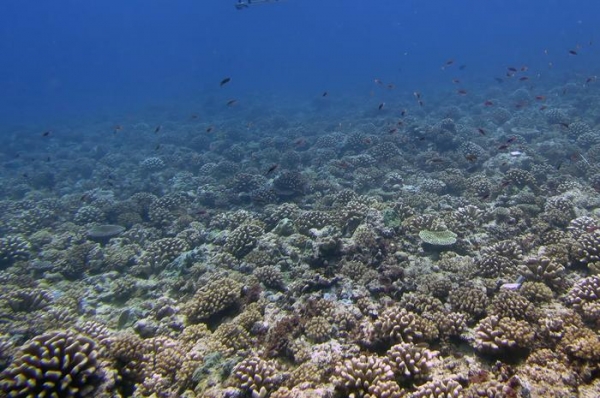Report on Coral Reef Restoration and Alignment with Sustainable Development Goals
This report analyzes the critical state of coral reefs, the restoration initiatives being implemented, and the direct correlation of these efforts with the United Nations Sustainable Development Goals (SDGs). The focus is on the work of the Coral Restoration Foundation (CRF) as a case study in addressing this global environmental crisis.
Threats to Coral Ecosystems and SDG Implications
The degradation of coral reefs is driven by a combination of global and local pressures, which directly threaten the achievement of key SDGs. The Florida Keys reef tract, for example, has experienced an estimated 97-98% degradation due to these cumulative impacts.
Primary Stressors
- Global Climate Stressors: Rising ocean temperatures and increased ocean acidification are the most significant threats. These are direct consequences of climate change, highlighting a critical challenge to SDG 13 (Climate Action). The symbiotic relationship between coral polyps and the algae within them breaks down under thermal stress, leading to coral bleaching.
- Local Stressors: These include agricultural runoff, pollution, overfishing, and direct physical damage to reefs. These factors compound the effects of climate change and undermine progress toward SDG 14 (Life Below Water), which calls for the conservation and sustainable use of marine ecosystems.
The Role of Coral Reefs in Sustainable Development
Healthy coral reefs are fundamental to achieving several Sustainable Development Goals through the vital ecosystem services they provide.
Contributions to Global Goals
- SDG 14 (Life Below Water): While covering less than 1% of the ocean floor, coral reefs support at least 25% of all marine species, making them critical hotspots of biodiversity. Their health is a direct indicator of the health of the broader marine environment.
- SDG 11 (Sustainable Cities and Communities): Reefs act as natural barriers that protect coastal communities by absorbing up to 97% of wave energy during storms, mitigating flooding, erosion, and property damage.
- SDG 3 (Good Health and Well-being): As a cornerstone of healthy oceans, coral reefs are integral to the marine ecosystems that generate over 70% of the oxygen in the atmosphere.
Restoration Initiatives: A Direct Action for SDG 14
In response to widespread reef loss, organizations like the Coral Restoration Foundation have developed innovative methods for active restoration, directly contributing to the targets of SDG 14.
The Coral Restoration Foundation (CRF) Model
CRF operates the world’s largest in-situ coral nursery in Tavernier, Florida, pioneering a scalable restoration methodology.
- Nursery Cultivation: The foundation utilizes “coral trees,” structures made from PVC pipes, to grow numerous fragments of different coral species. This method allows corals to receive optimal water flow and sunlight, accelerating their growth.
- Building Resilience: CRF’s strategy focuses on using coral fragments sourced from individuals that have naturally survived past bleaching events and other stressors. These “tough” corals carry resilient genotypes, increasing the likelihood that restored reefs can better withstand future climate impacts.
- Reef Outplanting: Once the corals reach a viable size, they are transported and strategically planted onto degraded reef sites by trained staff and volunteers, where they can continue to grow and reproduce.
Challenges, Impact, and Future Outlook
While restoration provides tangible hope, it faces significant challenges and must be viewed within the broader context of global climate action.
Scalability and Long-Term Viability
Experts acknowledge that current restoration efforts cannot match the scale of degradation caused by global climate change. The success of these projects is therefore intrinsically linked to global efforts to reduce carbon emissions and limit ocean warming, reinforcing the interdependence of SDG 13 and SDG 14.
Broader Impacts and Partnerships
Beyond the ecological benefits, restoration programs have a profound educational and social impact. They engage communities and volunteers, fostering a direct connection to marine conservation and inspiring broader support for environmental action. This collaborative approach embodies the principles of SDG 17 (Partnerships for the Goals).
Conclusion
Coral restoration is an essential strategy for preserving genetic diversity and rebuilding critical marine habitats. However, it is a reactive measure. The long-term survival of coral reefs, and the achievement of the SDGs they support, is entirely dependent on immediate and decisive global action to address the root cause of their decline: climate change.
Analysis of Sustainable Development Goals in the Article
1. Which SDGs are addressed or connected to the issues highlighted in the article?
The article primarily addresses issues related to the following Sustainable Development Goals:
-
SDG 14: Life Below Water
This is the most central SDG in the article. The entire text focuses on the degradation of coral reefs due to warming waters and ocean acidification, and the conservation efforts by the Coral Restoration Foundation to protect and restore these vital marine ecosystems. The article explicitly mentions that reefs “support at least 25% of all marine species,” directly linking to the goal of conserving and sustainably using the oceans and marine resources.
-
SDG 13: Climate Action
The article repeatedly identifies climate change as the root cause of coral reef destruction. It points to “global warming and ocean acidification” as the primary “global climate stressors.” The text also highlights the role of coral reefs in climate adaptation, noting they “mitigate storm damage by absorbing wave energy, in some cases by more than 90%.” This connects the issue directly to taking urgent action to combat climate change and its impacts.
-
SDG 4: Quality Education
The article touches upon the educational aspect of the conservation efforts. It quotes former professor Alex Brylske, who mentions his involvement with “hundreds of students” in the restoration programs. He describes the experience as “impactful,” suggesting that these programs serve as a powerful educational tool for raising awareness and promoting action for sustainable development.
2. What specific targets under those SDGs can be identified based on the article’s content?
Based on the article’s discussion, several specific SDG targets can be identified:
-
Targets under SDG 14 (Life Below Water)
- Target 14.1: By 2025, prevent and significantly reduce marine pollution of all kinds, in particular from land-based activities. The article mentions “agricultural runoff and overpollution” as “local stressors” contributing to the degradation of coral reefs.
- Target 14.2: By 2020, sustainably manage and protect marine and coastal ecosystems to avoid significant adverse impacts, including by strengthening their resilience, and take action for their restoration. The entire work of the Coral Restoration Foundation, which operates “coral nurseries” to grow and plant corals, is a direct action aimed at the restoration and protection of coral reef ecosystems.
- Target 14.3: Minimize and address the impacts of ocean acidification. The article explicitly names “ocean acidification” as a “double whammy with climate change” that harms coral reefs, and the restoration efforts are a way to address its impacts.
- Target 14.a: Increase scientific knowledge, develop research capacity and transfer marine technology. The foundation’s approach of working with “survivors of decades of local stress” and growing “20 different varieties” of coral demonstrates an effort to increase scientific knowledge about resilient coral species.
-
Targets under SDG 13 (Climate Action)
- Target 13.1: Strengthen resilience and adaptive capacity to climate-related hazards and natural disasters. The article states that coral reefs “mitigate storm damage by absorbing wave energy,” which is a natural form of strengthening resilience for coastal areas against climate-related hazards like storms.
- Target 13.3: Improve education, awareness-raising and human and institutional capacity on climate change mitigation, adaptation, impact reduction and early warning. The mention of “hundreds of students” participating in the program and finding it “impactful” directly relates to improving education and awareness on the impacts of climate change and the actions needed for adaptation.
-
Targets under SDG 4 (Quality Education)
- Target 4.7: By 2030, ensure that all learners acquire the knowledge and skills needed to promote sustainable development. The hands-on experience provided to students by the coral restoration program, where they “felt that they finally did something positive,” is a form of education for sustainable development, equipping them with practical understanding and motivation.
3. Are there any indicators mentioned or implied in the article that can be used to measure progress towards the identified targets?
Yes, the article mentions or implies several quantitative and qualitative indicators:
- Indicator for Target 14.2 (Ecosystem Restoration): The article provides a direct measure of the scale of restoration efforts, stating the Tavernier nursery “covers an acre and a half of sea floor.” It also provides a baseline for the health of the ecosystem, noting that “corals in the Florida Keys are 97% to 98% degraded.” Progress could be measured by the increase in restored acreage and the reduction in the percentage of degraded reefs.
- Indicator for Target 14.2 (Biodiversity): The article mentions that the nurseries support “20 different varieties” of coral, which serves as an indicator for efforts to maintain genetic diversity within the restoration program. It also notes that reefs “support at least 25% of all marine species,” an indicator of the overall importance of these ecosystems.
- Indicator for Target 13.1 (Resilience): A specific metric is provided for the adaptive capacity of reefs: they can absorb wave energy “by more than 90%.” This figure can be used as an indicator of the disaster risk reduction benefit provided by healthy reefs.
- Indicator for Target 14.3 (Ocean Acidification): While no specific pH value is given, the mention of “ocean acidification” as a result of “excess CO2” implies that measuring CO2 levels and ocean pH are the key indicators for this target.
- Indicator for Targets 13.3 and 4.7 (Education and Awareness): A qualitative and quantitative indicator is the involvement of “hundreds of students” in the program. The impact is described qualitatively, as students “come back in tears because they felt that they finally did something positive.”
4. Summary Table of SDGs, Targets, and Indicators
| SDGs | Targets | Indicators Identified in the Article |
|---|---|---|
| SDG 14: Life Below Water |
14.1: Reduce marine pollution.
14.2: Protect and restore marine and coastal ecosystems. 14.3: Minimize ocean acidification. 14.a: Increase scientific knowledge and research capacity. |
Mention of “agricultural runoff and overpollution” as stressors.
– Area of coral nursery: “an acre and a half of sea floor.” Mention of “ocean acidification” caused by “excess CO2.” Number of coral varieties grown: “20 different varieties.” |
| SDG 13: Climate Action |
13.1: Strengthen resilience and adaptive capacity to climate-related hazards.
13.3: Improve education and awareness on climate change. |
Wave energy absorption by reefs: “more than 90%.”
Number of people educated: “hundreds of students.” |
| SDG 4: Quality Education | 4.7: Ensure learners acquire knowledge and skills for sustainable development. | Qualitative impact on students: “Sometimes people come back in tears because they felt that they finally did something positive.” |
Source: wvpublic.org







